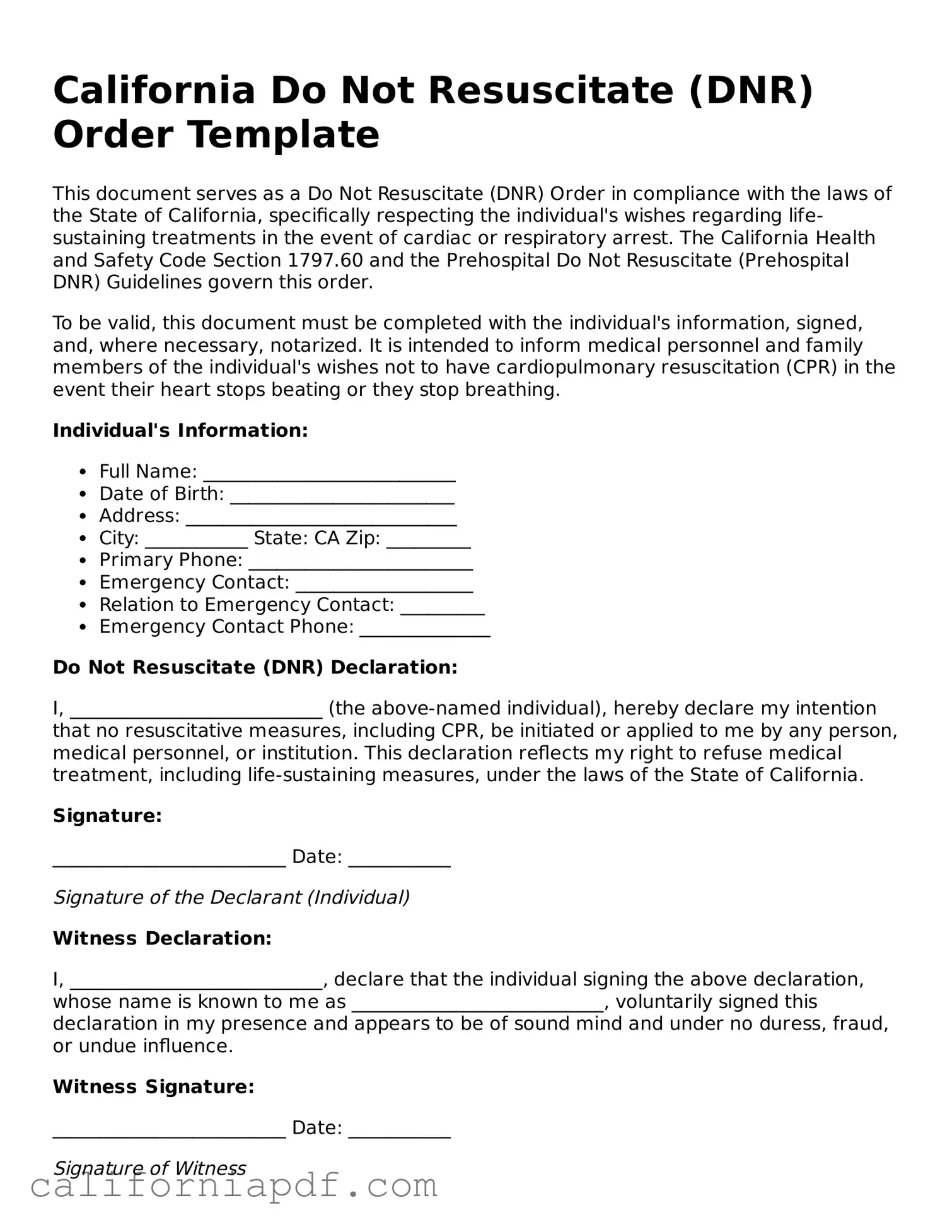California Do Not Resuscitate (DNR) Order Template
This document serves as a Do Not Resuscitate (DNR) Order in compliance with the laws of the State of California, specifically respecting the individual's wishes regarding life-sustaining treatments in the event of cardiac or respiratory arrest. The California Health and Safety Code Section 1797.60 and the Prehospital Do Not Resuscitate (Prehospital DNR) Guidelines govern this order.
To be valid, this document must be completed with the individual's information, signed, and, where necessary, notarized. It is intended to inform medical personnel and family members of the individual's wishes not to have cardiopulmonary resuscitation (CPR) in the event their heart stops beating or they stop breathing.
Individual's Information:
- Full Name: ___________________________
- Date of Birth: ________________________
- Address: _____________________________
- City: ___________ State: CA Zip: _________
- Primary Phone: ________________________
- Emergency Contact: ___________________
- Relation to Emergency Contact: _________
- Emergency Contact Phone: ______________
Do Not Resuscitate (DNR) Declaration:
I, ___________________________ (the above-named individual), hereby declare my intention that no resuscitative measures, including CPR, be initiated or applied to me by any person, medical personnel, or institution. This declaration reflects my right to refuse medical treatment, including life-sustaining measures, under the laws of the State of California.
Signature:
_________________________ Date: ___________
Signature of the Declarant (Individual)
Witness Declaration:
I, ___________________________, declare that the individual signing the above declaration, whose name is known to me as ___________________________, voluntarily signed this declaration in my presence and appears to be of sound mind and under no duress, fraud, or undue influence.
Witness Signature:
_________________________ Date: ___________
Signature of Witness
Optional Physician Signature (if available):
I, ___________________________ (Physician), certify that I have discussed the implications of this Do Not Resuscitate (DNR) Order with the individual and that they understand the nature and significance of their decision.
Physician's Signature:
_________________________ Date: ___________
Signature of Physician
License Number: ________________________
This document should be reviewed periodically and kept in a place where it can be readily accessed by family members and medical personnel. It is also advisable to discuss your wishes with your family and healthcare provider to ensure your choices are clearly understood.
